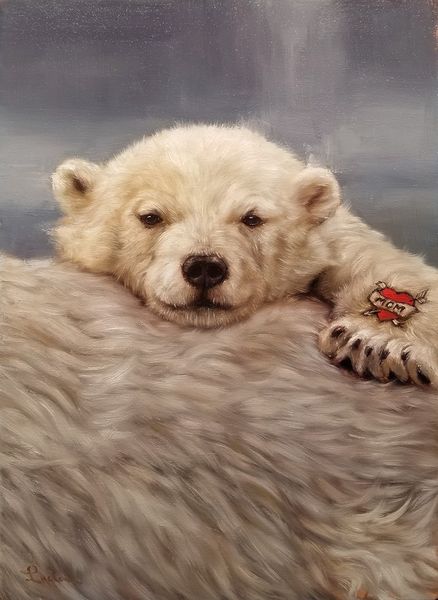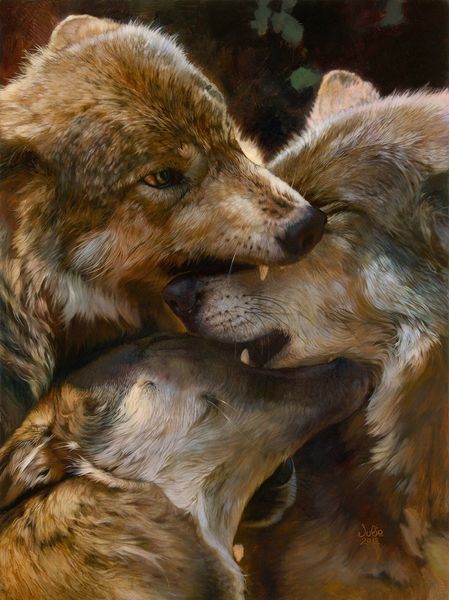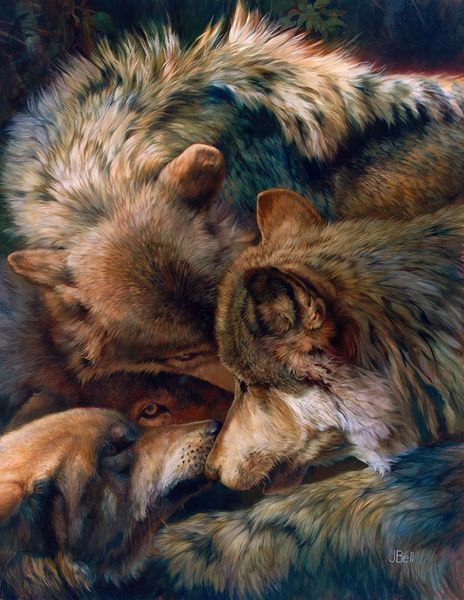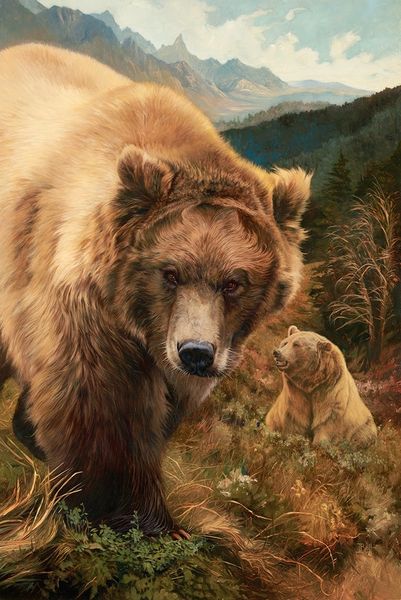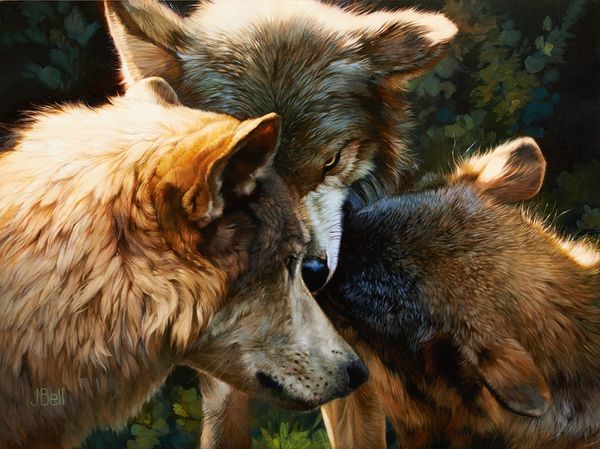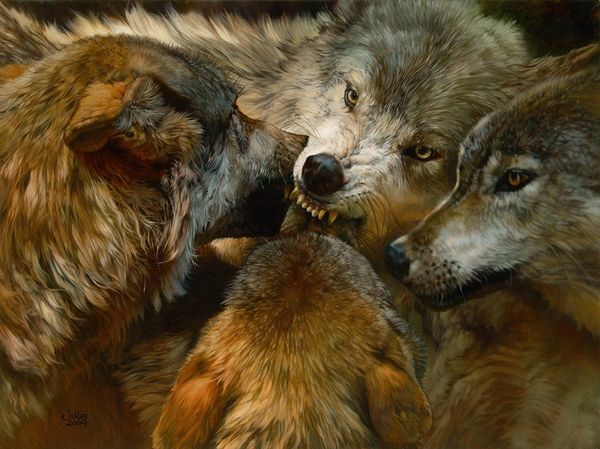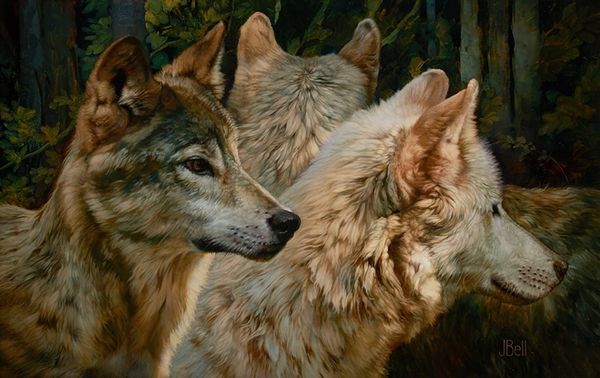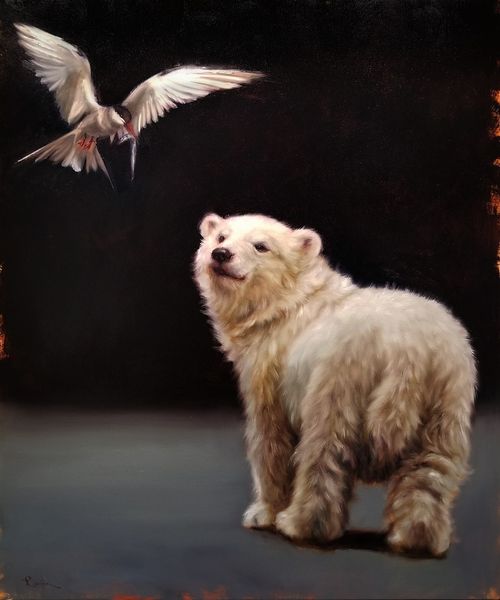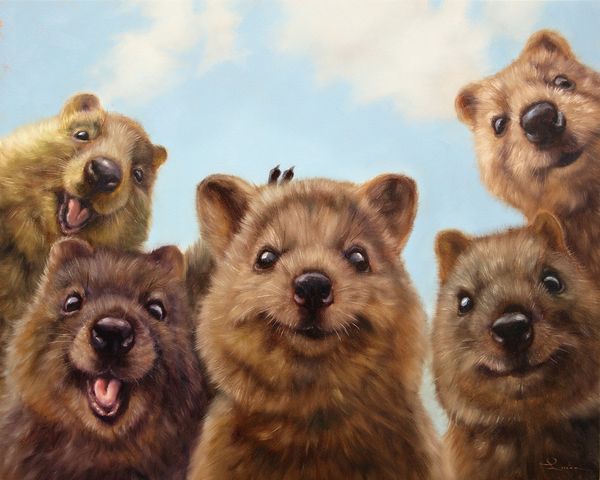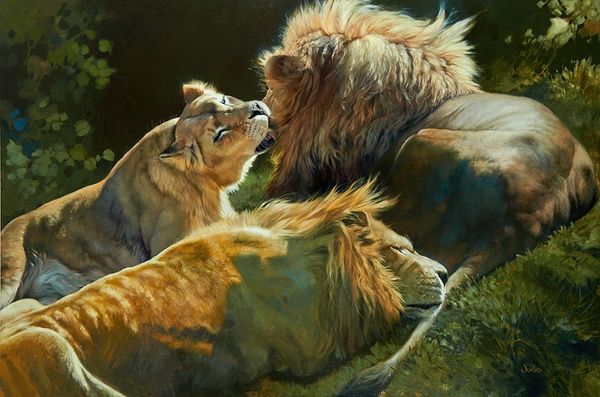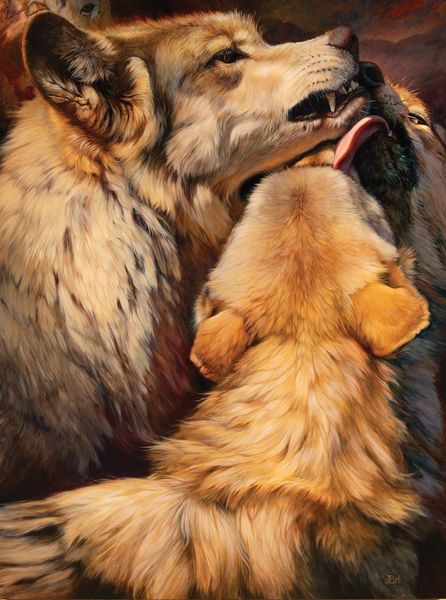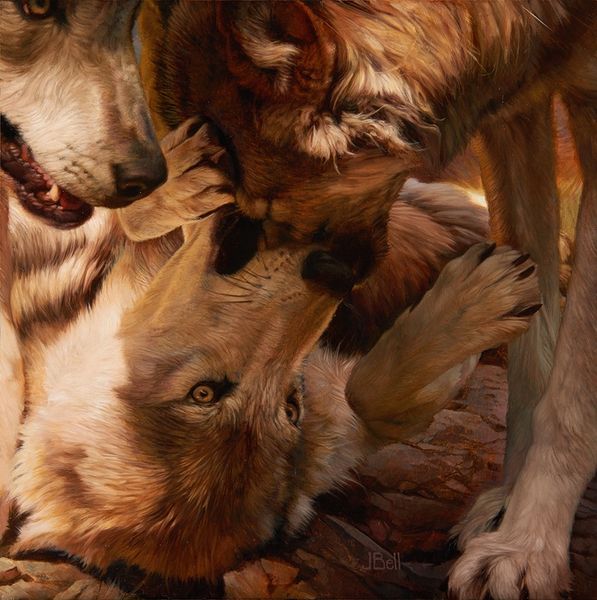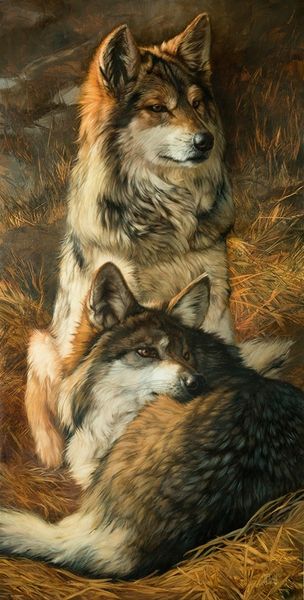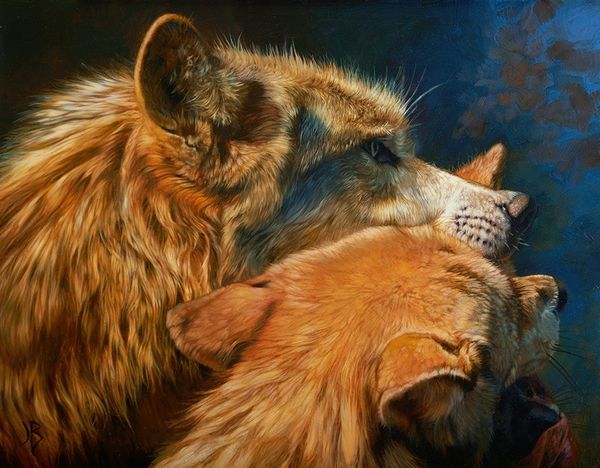
painting, oil-paint
#
portrait
#
animal
#
painting
#
oil-paint
#
figuration
#
animal portrait
#
realism
Copyright: Modern Artists: Artvee
Curator: The palpable sense of tranquility is my first impression of "Mid Winter Dreams," by Lucia Heffernan, rendered in oil on what appears to be a square canvas. What draws your eye? Editor: I'm immediately struck by how the artist uses the medium itself to emphasize the texture of the polar bears' fur. The very process of layering the paint creates this soft, tactile feel that you just want to reach out and touch. I’m curious about the way oil paint is being used here, emulating a soft texture. Curator: It's an interesting use of traditional painting, particularly when viewed through a contemporary lens. The presentation prompts the viewer to consider our relationship to these vulnerable animals, which have become such potent symbols of climate change within museum settings. The institution plays a role in contextualizing the work within broader discussions about environmental awareness. Editor: Exactly! And think about the labor involved in creating this kind of realism, versus the ease of, say, digitally generating a similar image. There's a conscious choice here, perhaps a commentary on slowing down, appreciating the handmade, while depicting creatures vulnerable to a sped-up world of mass production and mass consumption. Curator: The simple, clear background certainly underscores this emphasis on the individual. I'm thinking about the tradition of animal portraiture and its ties to social status and power, even a long association with royal and wealthy collectors who displayed such works as trophies of sorts. But now the polar bear becomes an icon for survival, perhaps. Editor: And survival relies heavily on the tangible realities: the availability of resources, the conditions of their environment, the very stuff of their existence. Looking closely, it’s worth asking, too, about the origin and processing of the paint used here. What pigments, what binders contribute to its unique effect? The choice of these materials speaks volumes, if we listen. Curator: Absolutely. Considering that intersection of material reality and symbolic weight changes how we might see such works in art institutions—beyond purely aesthetic appreciation, toward something far more urgent. Editor: I agree. Thinking through process and history, our understanding of this initially serene scene can reflect anxieties surrounding the production of art and how human activities endanger these beautiful animals. Curator: Yes, by looking carefully, one sees it can reveal layers beyond a simple depiction of warmth, closeness and beauty. Editor: Indeed.
Comments
No comments
Be the first to comment and join the conversation on the ultimate creative platform.
